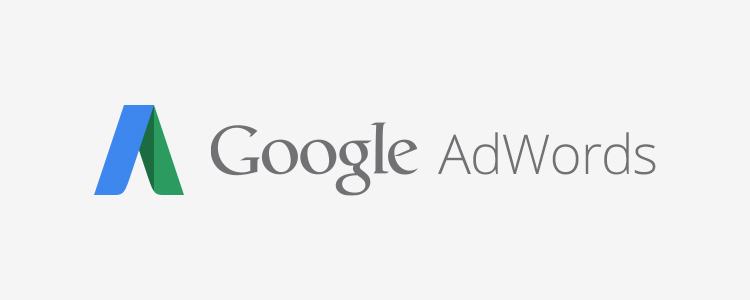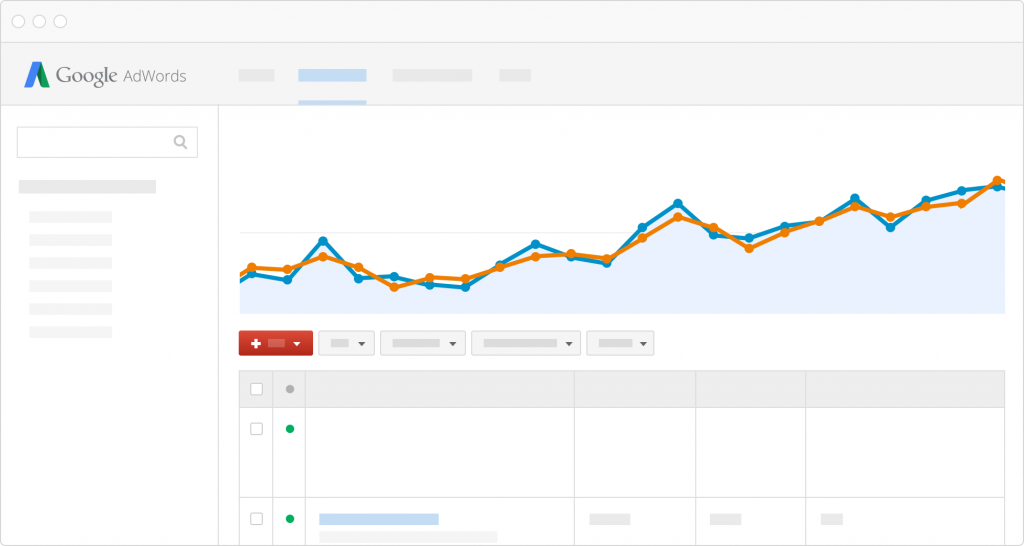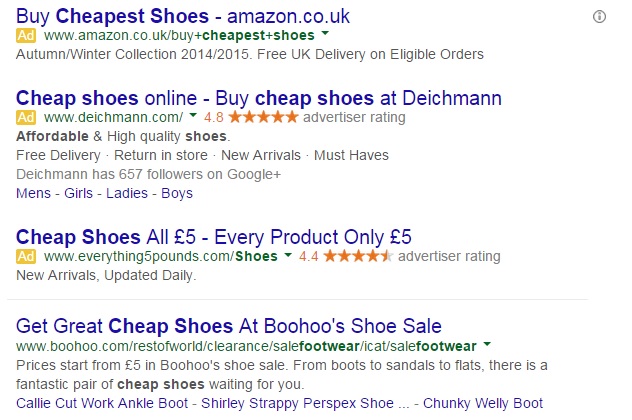Google AdWords is an invaluable online advertising tool for digital marketing. You can reach new audiences, who are searching for your specific products or services. On top of this, you will only pay when they visit your website, or call you directly. Sounds great, right?
So AdWords is great for leads, sales, and generating traffic to your site. That much is certain. And although setting up and running Google Ads is simple, mastering the art of creating and managing the perfect set of adverts on AdWords is no mean feat.
In this post, we address some of the most common issues, questions and queries, which pop up regularly.
What is SEM, and how does it differ to SEO?
SEO is managing a website to ensure it is visible within search engines naturally, via organic means, which does not require paid advertising.
SEM, or search engine marketing, is where paid advertising is used to give your content or business website an advantage, by appearing above or next to the normal, organic search results. This has no impact on the natural listings on Google.
SEO has very limited means of control, whereby SEM and AdWords advertising, means you can directly influence how you rank, and what terms you rank for. You will appear clearly above the organic results listings.
Why do I need SEO and AdWords?
Many businesses may be happy that they already appear on Google. Why would they want to pay Google money to advertise on a platform where they’re already visible?
Nowadays, being visible is not enough. Search results are highly competitive, as ranking for popular keywords and search terms is highly coveted. AdWords gives you an advantage, but it doesn’t take away the high importance of optimising web pages for natural results.
Current customers who already know your business can easily find you by brand name. But how about someone who is looking for your services, but is not yet aware that your business exists, and offers exactly what they’re looking for? This is where AdWords comes into play.
AdWords allows you to bid for key terms that apply to your business. They are going to be searching for a product, or a service, by location or topic.
By choosing to advertise your website for these key terms, you can give your visibility on Google an added boost, to customers who are genuinely interested in what you have to offer.
How does AdWords bidding work?
You can bid on any keyword or phrase which you want to rank for. Of course, the more popular the keyword, the higher the bids.
The position of your ad is created from your ad rank, which is your ad quality score times your maximum bid. Your ad position and cost per click is relative to the bids of other competitors bidding, and their quality score.
To put it simply, a strategic plan is needed to ensure the cost of advertising is warranted, and that you aren’t bidding for key terms which may be wasted. Creating top quality ads, for a high quality score, and bidding a suitable amount, is essential for an effective AdWords campaign.
AdWords Ads: Where will my advert appear?
They can appear in many different places all across the internet. Essentially, this boils down to how your ads are targeted, and the types of advertisements you have created. Ads can be targeted in the following ways:
- Visible within Google searches
- Visible on websites customers may visit
- Ads on mobile phones or tablets
- Ads displayed for particular geographical locations
- Ads displayed to specific audiences or demographics
When will my adverts appear?
Your adverts will appear when chosen keywords or phrases are searched for, which will trigger your site to be displayed both on Google and other websites.
When it comes to other websites, your ad will be displayed on websites in the extensive Google Network, which are related to your advertisement in question. Your keywords will be matched to websites within the network. Otherwise, you can choose and set bids for site ad placements.
What is my quality score?
The way ads are ordered, is based on their Ad Rank. The highest gets the coveted top spot in the order.
To calculate the Ad Rank, Google takes the bid amount, and the quality/relevance of the ad content to the search term. The Quality Score is your maximum bid times quality score. The cost-per-click is deduced by the ad rank of the next ad displayed below yours, divided by your quality score.
What you’re paying, is the lowest amount of money to beat the Ad Rank of competitors.
If your Quality Score is 10, anyone who beats you must be paying the most. You could also easily outrank others bidding more, and can pay the least amount possible for the ranking position you gain.
How can I check my adverts are live? Can’t I just search on Google?
If you want to find out what your ads look like, and how they’re doing, then searching for them on Google isn’t the best way to go.
By searching for the specific keywords which will trigger your ad to be displayed, you are going to increase the number of impressions without clicks, which in turn, may lower your click-through rate. This will mean your ad may be prevented from displayed in the search results page as often. As you have a low click-through rate, you will gain a lower quality score.
The Ad Preview and Diagnosis tool the best way to check the ads are live, as it won’t affect your ranking standing.
How can I get more ads on mobile devices?
You can easily enable bid adjustments, and then bid higher for adverts appearing on mobile devices.
What are negative keywords?
Negative keywords are terms, which when searched for, will mean your ad isn’t displayed. This means you will not waste money on advertising to customers who are not interested.
For instance; say you owned an expensive shoe shop. You are bidding on all key terms related to shoes, whether its sport shoes, dress shoes, and so on. But would someone searching for “cheap sport shoes” be interested in your products which are over £100 and of the highest quality? Probably not. Therefore, you could include anything involving “cheap” as a negative keyword.
How can I get people to click my ad?
Like anything, creating effective ad text is key. Enticing users with phrases such as “Click Here” is against Google Ad policies, but offering promotions, offers, or showcasing prices is a good way to drive clicks.
Will I have to pay my maximum bid to be displayed top?
Nope. You’ll most likely pay a lot less, as your cost-per-click is based on what’s minimally required to maintain your ad position. So it boils down to what your competitors are bidding.
Similar to an actual auction; you may be willing to part with £100 for a chosen item, but if your competition stops bidding at £40, you’d pay £41, not £100. Obviously, AdWord bidding isn’t in the same price bracket, but you get the picture.
Your cost per click, or CPC, is the ad rank of the ad below you, divided by your quality score.
Getting started with AdWords takes no time at all. What does take time, is keeping them updated, and optimising adverts to ensure they are gaining the optimum number of click-throughs.
Even once your adverts are set-up, they’re no use unless you are gaining relevant traffic, which converts into business. You could also be wasting money if your account is set-up incorrectly, or is not reassessed over a longer period of time.
If you don’t have time to monitor and maintain your Google AdWords PPC campaigns, then get in touch with the team at Xanthos, who have extensive experience in optimising online advertisements.














